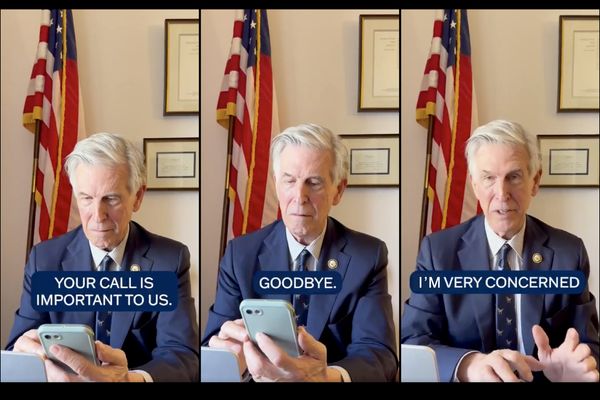
A writer does not need to smile – on the page, words can do the smiling. This is something you are aware of throughout American playwright Sarah Ruhl’s extraordinary tale of being struck with Bell’s palsy a day after giving birth to twins. The first sign something is awry is when a lactation consultant casually observes that one of her eyes looks droopy. And when she gets up to look at herself in the bathroom mirror, she finds that the left side of her face has “fallen down. Eyebrow, fallen; eyelid, fallen; lip, fallen, frozen, immovable.” The smile she has, all her life, taken for granted is gone. She explains that, before seeing her reflection in the mirror, she was one person. Now she is another. But she is not self-pitying. Her prose is smart, quipping, pacy. It has the quicksilver mobility her face lacks.
She was unlucky: for many people, Bell’s palsy passes quickly. Hers proved depressingly tenacious. Ruhl describes a decade of paralysis but begins with her pregnancy (her second – she has a daughter at pre-school). Her account brought back memories (having had twins myself) of an in-body experience that at times seems almost an out-of-body experience, a physical overachievement that doubles as a hitch, a risk, an extravagant burden. She writes vividly about the marathon of early days after birth: “The sleep deprivation when breastfeeding twins can feel like a form of psychosis”, yet she does not neglect to celebrate her children, their joyous existence. Charmingly named after the intersection where she and her husband Tony (a child psychiatrist) met in Providence, Rhode Island - “Williams Street and Hope Street” - their twins are called William and Hope.
But it is the Bell’s palsy that fascinates most. Ruhl’s face fell just at the point her career was doing the opposite: she had a play transferring to Broadway and had been nominated for a Tony. Disconcerting, you might concede, not to be able to smile on the red carpet. And yet you might also feel (Ruhl tries to tell herself this) that her paralysis is, after all, not life-threatening – a small affliction in the general scheme of things. That misgiving does not last: Ruhl’s achievement is in making one see how many questions her condition raises about how we – women in particular – interact with the world and try to appease it with a smile. “Women have been told by men to smile from time immemorial,” she writes. She is oppressed by the smile’s place in American (and worldwide) culture, resisting “horrid gleaming white teeth, gloating symmetries”. Above all, she shows how the absence of a smile meddles with the sense of self. Fortunately, she has always been more comfortable observing than being observed (as befits a playwright) and remarks that by maintaining a demure stillness, she has been partly able to disguise her problem. But there is a terrible (and obvious) downside to acting in a withdrawn manner: it makes her withdrawn.
Ruhl uses the Bell’s palsy narrative as a cradle within which to rock other subjects, from her postpartum depression to “bed rest” as a historically male-imposed and often undesirable prescription for women, to a moving portrait of her courageous Australian mother-in-law, Elizabeth, who died of cancer a year after the babies were born. And she recounts her meetings with varied medics (some helpful, some shockingly out of order) in search of a cure.
At no point does this seem a vanity project. It is, more often, a practical investigation that explores how, when half your face goes on strike, new ways have to be found to do a smile’s work. As the book progresses, Ruhl’s chin-up narrative becomes more distressing as one understands more of what has been involved in staying upbeat. Sometimes, she opts to explain the palsy to people she has not met before. At other times, she relies more on positive sound effects: offering approving murmurs to the students she teaches at Yale’s drama school. And throughout, she is driven by a contradictory purpose: to make peace with her face and to fight on to the point where the left side is able to embark on its uncertain upwards trajectory into a smile.
• Smile: The Story of a Face by Sarah Ruhl is published by Vintage in UK (£16.99) and Bodley Head in Australia ($35). To support the Guardian and Observer order your copy at guardianbookshop.com. Delivery charges may apply







